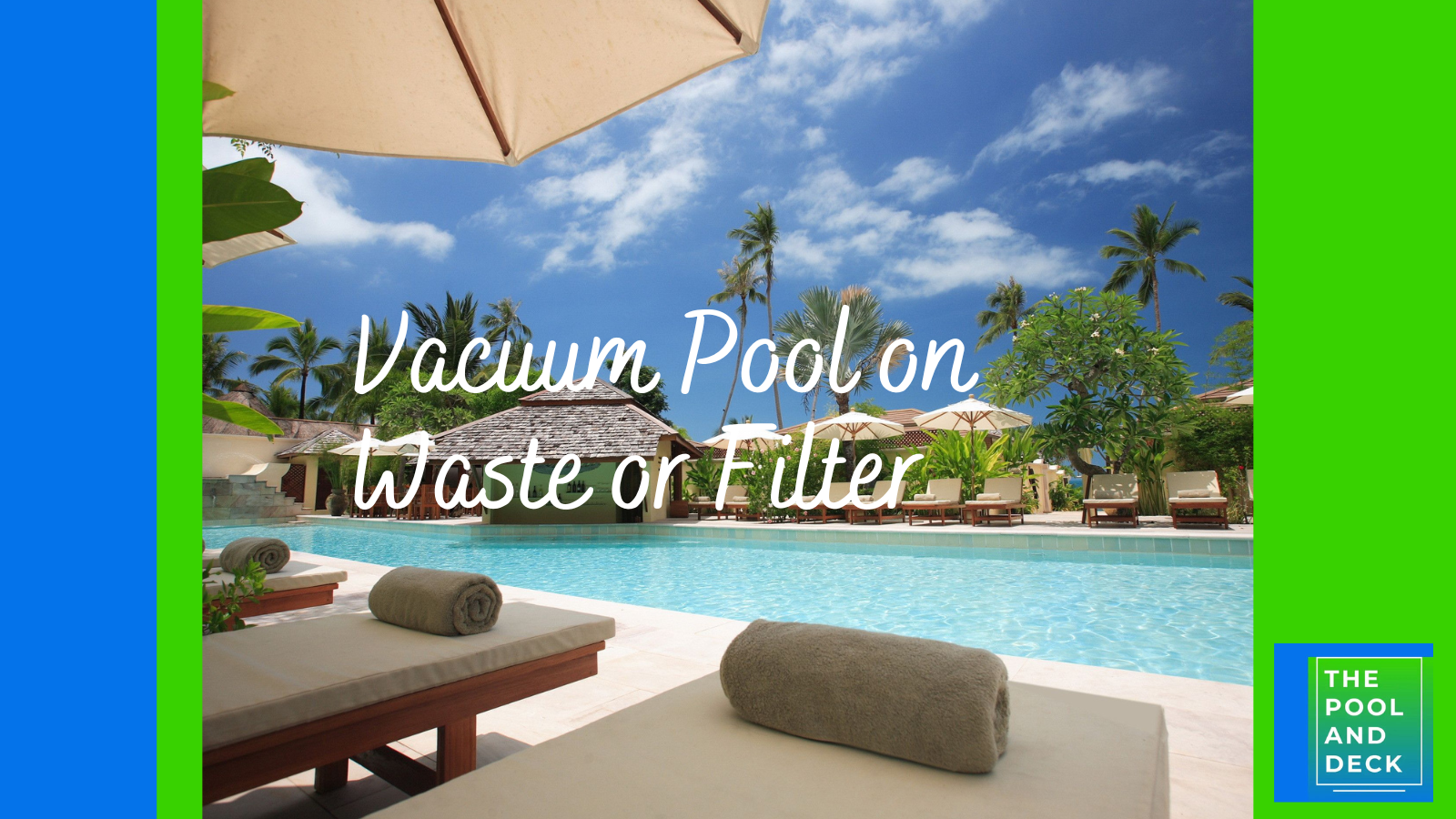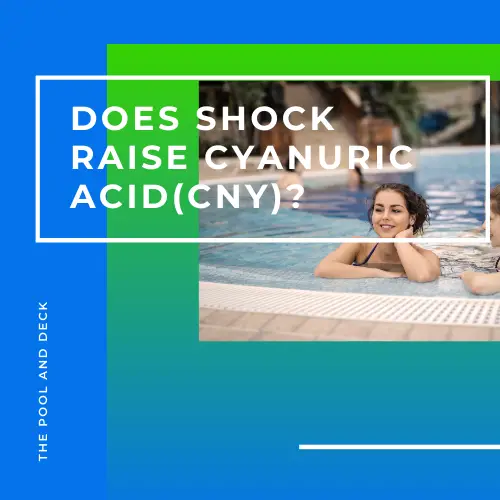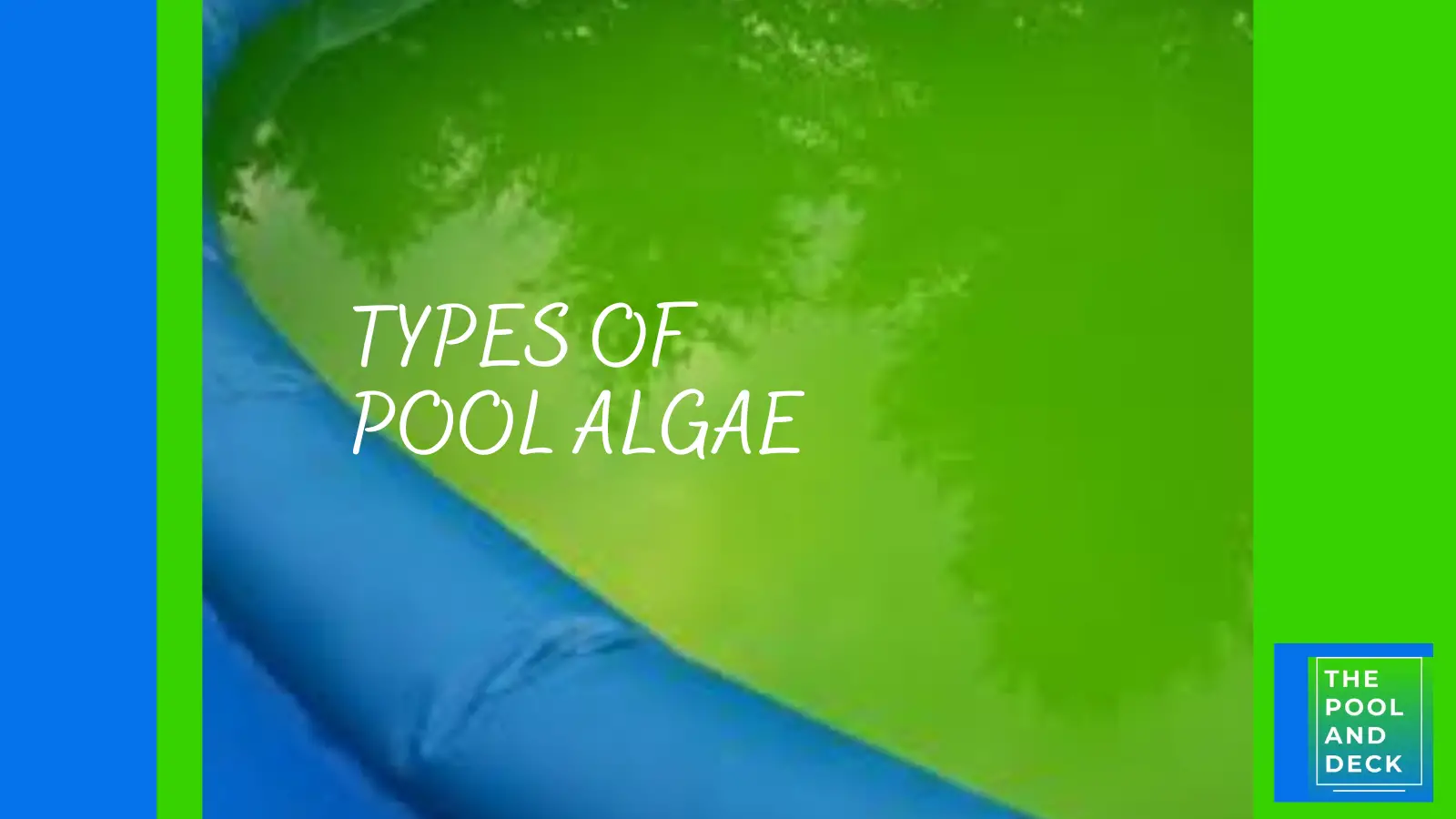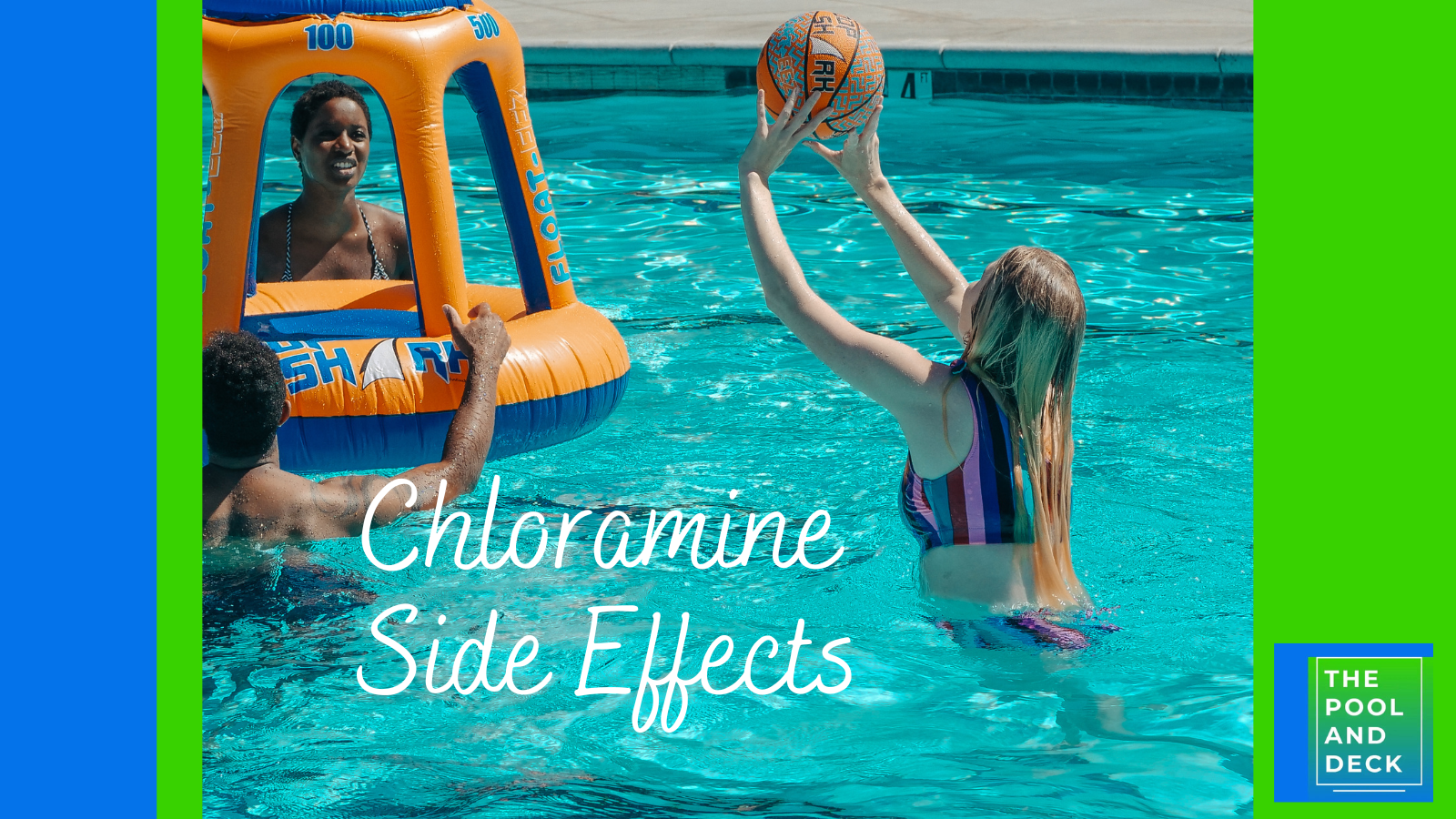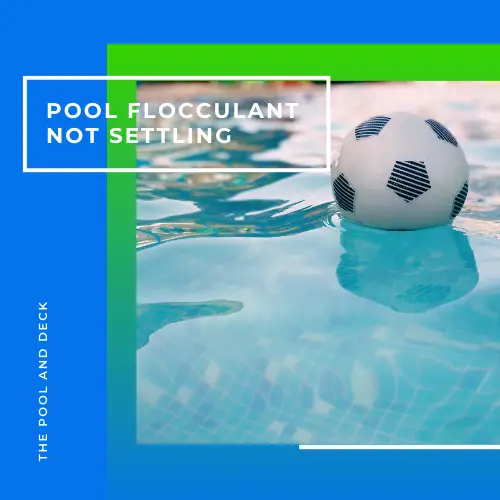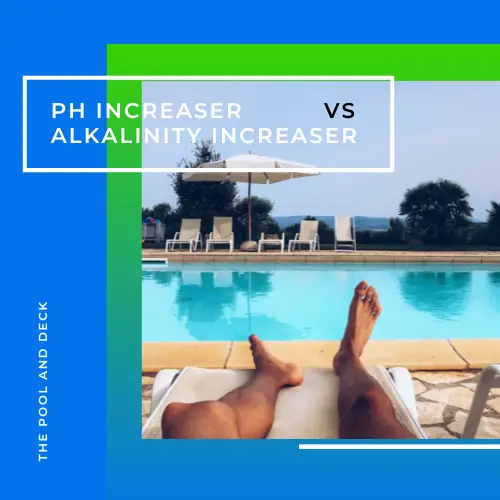Is Sodium Hypochlorite Chlorine? (Important Stuff You Need To Know!)
thepoolanddeck.com is a participant in the Amazon Services LLC Associates Program, an affiliate advertising program designed to provide a means for sites to earn advertising fees by advertising and linking to Amazon.com . The website is also an affiliate of a few other brands. The affiliate links never increase your purchase price. We do appreciate your support. Thank you very much!
Table of Contents
Is Sodium Hypochlorite the Same as Chlorine?
One of the joys of having a pool in your backyard is looking at the crystal clear blue waters and knowing that it is free of germs, bacteria & algae. Regular pool sanitization, using Chlorine, is highly recommended. But is Sodium Hypochlorite the same as Chlorine?
Sodium Hypochlorite, (aka Liquid Chlorine) is not Chlorine. Rather it is a Sodium salt of Hypochlorous Acid. Liquid Chlorine is a 10-12.5% solution of Sodium Hypochlorite in water. Sodium Hypochlorite releases Free Chlorine (FC) when added to pool water. Free Chlorine is the disinfectant that kills the pathogens & algae in your pool.
The chemical formula for Sodium Hypochlorite is NaOCl and it’s reaction with pool water is represented as
NaOCl + H2O => NaOH + HOCL
The Hypochlorous Acid (HOCL) is what kills the germs, bacteria & algae.
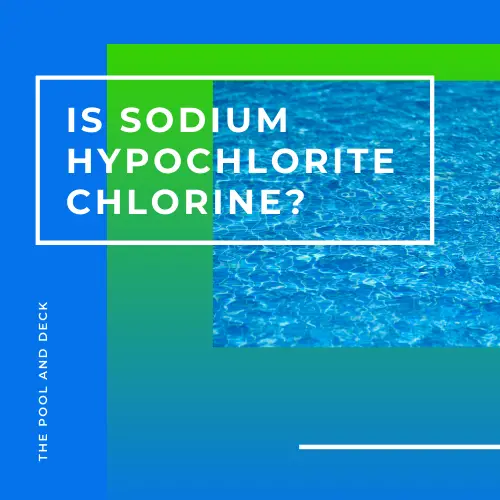
Liquid Chlorine used for sanitizing swimming pools is just a more concentrated form of the household Bleach. Household Bleach is typically a 6% solution of Sodium Hypochlorite as opposed to 12.5% for a pool sanitizer.
Sodium Hypochlorite and Calcium Hypochlorite are unstabilized sources of Free Chlorine as opposed to Dichlor and Trichlor, which are stabilized sources of Free Chlorine.
Sanitizers need to be stabilized using Cyanuric Acid (CYA) because UV rays from the sun will deplete Free Chlorine in no time. Actually, without the protection of Cyanuric Acid (CYA), 90% of the Free Chlorine will be burned off by the sun in around 2 hours.
Sodium Hypochlorite can be used for sanitizing a pool as part of the regular pool maintenance routine. However, it is not the most ideal product for this job. Trichlor tablets are a lot more convenient to use and have Cyanuric Acid built into their formulation.
Is Sodium Hypochlorite the Same as Shock?
Sodium Hypochlorite is, without doubt, the best chlorine product for shocking a pool.
Under normal situations, you should maintain the Free Chlorine (FC) level in your pool water between 2-4 ppm, (3 ppm is ideal). This level is achieved by having a regular and uniform supply of chlorine to your pool. This is the “Maintenance Chlorination”.
Pool Shock, on the other hand, spikes up the Free Chlorine (FC) level from less than 4 ppm to at least 10 ppm (sometimes even to 25 ppm!). This is the “fast & furious” way of killing the pathogens & algae.
The Free Chlorine (FC) from the Pool Shock is not expected to stay in the pool for long. The high level of Free Chlorine (FC) as a result of the Shock should ideally do its job of killing the pathogens & algae, overnight.
Once the sun is up, the UV rays should burn off the remaining Free Chlorine (FC) and bring the level to 5 ppm or less. It is safe to swim and will not result in itchy skin or red eyes.
Shock should not contain, or be supplemented by, Cyanuric Acid (CYA). This is why Pool Shock should be unstabilized chlorine and Sodium Hypochlorite is perfect as a shock.
Liquid Chlorine (Sodium Hypochlorite) has a 12.5% concentration of chlorine. This means that just 1 gallon will increase the Free Chlorine (FC) level of the pool by 12.5 ppm for a 10,000 gallon pool. It mixes and spreads across the pool quite fast as it is a solution.
Check the Cyanuric Acid (CYA) Level before Shock
You must always check the Cyanuric Acid (CYA) level of your pool before shocking it. The recommended Cyanuric Acid (CYA) level for an outdoor pool is 30-50 ppm. A high Cyanuric Acid (CYA) level decreases the effectiveness of Chlorine in killing the pathogens.
In fact a Cyanuric Acid (CYA) level of 100 ppm or more is a complete no-no. You must dilute your pool to bring down the Cyanuric Acid (CYA) level within range.
Check the pH before Shock
You must check the pH level of the pool before shocking. If the pH is higher than 7.5, you will need to reduce it by adding muriatic acid.
The Hypochlorous Acid coexists with OCl- ions and the %age of each depends on the pH of the pool water. When pH of the pool water rises above 7.5, the %age of Hypochlorous Acid drops significantly. In other words the effectiveness of the shock drops if the pH of the pool water is high.
Can you Use Sodium Hypochlorite in a Swimming Pool?
Sodium Hypochlorite is widely used in swimming pools, especially as a shock.
Liquid Chlorine, which is a 10-12.5% solution of Sodium Hypochlorite is the product of choice for pools. It offers the following advantages:
- High concentration of Available Chlorine (AC)
- Being in liquid form it mixes and disperses fast
- Does not raise the Cyanuric Acid (CYA) level of the pool
- Does not increase the calcium hardness level
- Cost Effective and Easy to Use
Sodium Hypochlorite is a general purpose disinfectant and a bleaching agent when dissolved in water. The concentration of the solution depends on the intended use.
In addition to its use in the swimming pool industry, it finds use in:
- Home Cleaning Products: As a bleaching agent and a disinfectant
- Medical Products: For preventing & treating skin & tissue infections
- Water Purification: Both drinking water and wastewater systems
How Much Chlorine is in Sodium Hypochlorite?
The Available Chlorine (AC) in Liquid Chlorine of 12.5% concentration is 12%.
Sodium Hypochlorite is commercially available as a solution in water. The Sodium Hypochlorite concentration depends on the intended use. Concentration level in antiseptic solutions may be as low as 1%, household bleach at 6% and liquid chlorine for swimming pools at 12.5%.
How Much Sodium Hypochlorite do I Add to My Pool?
The thumb rule is that 1 ounce of Liquid Chlorine will raise the level of Free Chlorine (FC) of 1,000 gallons of pool water by 1 ppm.
To determine the quantity of Liquid Chlorine that you must add to your pool, you must know the
- Volume of your pool in Gallons
- Present level of Free Chlorine (FC) in ppm
- Target level of Free Chlorine (FC) in ppm
To keep your pool sanitized at all times you must maintain the Free Chlorine (FC) level in the 2-4 ppm range. Top up the Cyanuric Acid (CYA) level if it is below 30-50 ppm level. Cyanuric Acid (CYA) shields the Free Chlorine (FC) from the UV rays of the sun.
When shocking the pool the Free Chlorine (FC) level must be raised to 10 ppm or more. Quite often an initial level of 25 ppm is targeted.
There should be no addition of Cyanuric Acid (CYA). You actually want the sun to burn off the excess Free Chlorine (FC), as soon as possible.
In either case, do stabilize the pH of pool water to 7.5 before adding Liquid Chlorine. The effectiveness of Sodium Hypochlorite reduces at higher pH levels.
How Long After Adding Liquid Chlorine Can You Swim?
It is safe to swim in a chlorinated pool if the Free Chlorine (FC) level is below 5 ppm.
Wait for at least 4 hours before getting into the pool after adding Sodium Hypochlorite (Liquid Chlorine) to the pool water as part of the regular weekly sanitization routine. This is sufficient time for the chlorine to have dissipated in the pool water and neutralized the germs, bacteria & algae.
It is best to shock your pool with Liquid Chlorine in the evening after you are done using the pool for the day. The Free Chlorine (FC) level will spike up, but then no one is going to be using the pool. Moreover, the Free Chlorine (FC) will not get burned off by sunlight.
During the night the Free Chlorine (FC) will circulate and kill all the pathogens. In the morning the sunlight will burn off any excess chlorine. Free Chlorine depletes by 50% every 45 minutes when exposed to UV rays.
Under the UV rays, 10 ppm can drop to 2-3 ppm in 1 ½ hours, without a stabilizer. You will be able to swim, but do check the Free Chlorine ((FC) level before you dive in!
For more information on Pool Chlorine Types refer to my post Complete Guide To Pool Chlorine Types. (What Is The Best?).
Recommended Swimming Pool Chemicals
Best Liquid CYA Free Pool Shock
Champion Liquid Chlorine (Sodium Hypochlorite) Pool Shock (12.5%) is easy-to-use, fast, and effective. This Pool Shock does not have Cyanuric Acid (CYA-stabilizer) and will not result in build-up of scale. Order from Amazon using the link below:
Liquid Chlorine Pool Shock (Case – 4 Gallons) – 12.5% Sodium Hypochlorite
Best Cal-Hypo Pool Shock
HTH Super Shock! Pool Shock Treatment is the 4-in-1 powerful pool shock designed to boost chlorine levels and kill and prevent bacteria and algae for a clear, healthy pool. Each pound of Super Shock! packs a powerful punch, treating 13,500 gallons and restoring crystal clarity in just 24 hours. This pool shock is great for all pool types and won’t fade your pool liner. Order from Amazon using the link below:
HTH 52026 Super Shock Treatment Swimming Pool Chlorine Cleaner, 1 lb (Pack of 12)
Best Dichlor Granular
Rx Clear Granular chlorine is 99.3% Sodium dichlor with added benefits of containing bactericide, algaecide, and disinfectant. It has a long shelf-life and low odor. Rx Clear is pH neutral and 100% soluble. Order from Amazon using the link below:
Rx Clear Stabilized Granular Chlorine
Best Trichlor Tablets
Rx Clear 3″ Stabilized Chlorine tablets are 99% Trichlor with added benefits of containing bactericide, algaecide, and disinfectant. It is slow dissolving with 90% available chlorine. The dosage is 1 tablet per 10,000 gallons of pool water which lasts for up to one week. Order from Amazon using the link below:
Rx Clear 3-Inch Water Soluble Chlorine Tabs
Thank you very much for reading the post. I do hope you found it informative and helpful.

